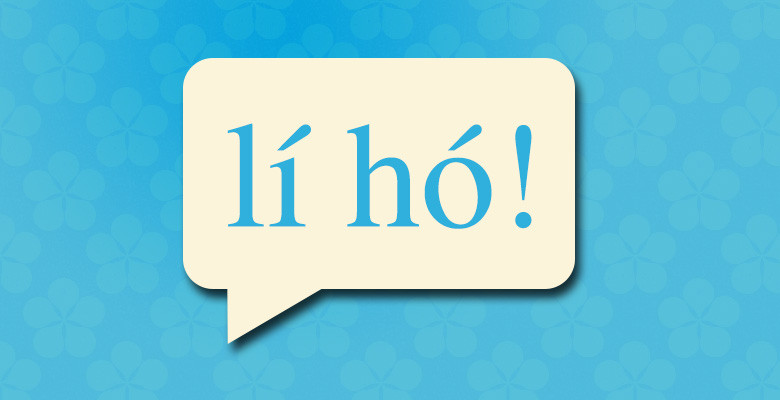
If you’re only going to learn one of Taiwan’s languages, then learn Mandarin. But if you fancy a challenge, learning Taiwanese will push your limits and open new doors.
Taiwanese is spoken by around two thirds of the population of Taiwan. It’s part of the Minnan group of related Chinese languages that originated in Fujian, across the Taiwan Strait. The Hokkien spoken in Singapore and Chinese communities around South East Asia is quite close to Taiwanese, with the differences between the two being similar in scope to the differences between British and American English. In Taiwan itself there are minor differences in accent between regions, and a few local dialect words that differ between, say, Yilan and Tainan, but whichever variety you choose to learn you will be understood throughout Taiwan.
If you’ve already learned some Mandarin, it might be instructive to know some of the differences. Whereas Mandarin has four main tones (plus the unstressed qingsheng, or fifth tone), Taiwanese has seven. The tone system in Taiwanese is pretty complicated and involves a concept called tone sandhi. You already know sandhi from Mandarin—it’s when tones change according to set rules. In Mandarin this happens with just a few words: bù (not/no) changes to bú before a fourth tone, so you say bù hǎo (not OK) but bú yào (don’t want). When two third tones appear in a row, the first one becomes a second tone. These rules are not too difficult to wrap your head around. With Taiwanese though, the majority of words in a sentence are affected by sandhi. You could have a sentence with eight syllables, and seven of them need to change their tone from the one you might find in a dictionary. Now, there are rules that govern the changes here too, but they are a lot trickier to get to grips with.
Taiwanese also has a few different sounds to try out. Gone are the pesky retroflexes from Mandarin (zh, ch, sh, r), as is f. But where Mandarin has b and p, g and k, Taiwanese has b, p, ph, and g, k, kh. Very roughly, b is pronounced like it is in the English word amber, p is like the b in bus, and ph like the p in push. So a Taiwanese b (and likewise the semi-swallowed g) can be difficult for new learners to pronounce. There are also nasal vowels, so while chia means “here”, chiaⁿ (with the vowel said in a nasal intonation) is “upright, correct”. Older varieties of Chinese had “stops”, which have all been lost in Mandarin. These are sounds like the p on the end of “slap” and the t in “flat”. This is why Mandarin speakers can struggle to pronounce the ends of English words properly. Taiwanese has preserved the stops from ancient Chinese, so in the language today you can still hear p, t, and k and the ends of words, though they are a bit more muted than their English counterparts. There is also a final h on some words, which represents a glottal stop, a kind of catch in the throat. Think of a Glaswegian saying “bottle” (sounds something like bo’ul) and you’ll get the idea.
The fun doesn’t stop with pronunciation. Taiwanese grammar is similar to Mandarin, but just different enough to trip you up at odd times. For example, in Mandarin you might say wǒmen chūqù, hǎo bù hǎo? (shall we go out?) But in Taiwanese, you need to decide first which “we” you are talking about. Is it gún (not including the person being spoken to), or lán (all of us)? English doesn’t have this distinction between us-not-you and us-and-you, and while Mandarin does have wǒmen and zánmen, the latter has fallen out of everyday use in Taiwan, and wǒmen generally covers both uses, like “we” in English. Also, the VERB NOT-VERB construction so familiar in Mandarin—hǎo bù hǎo, shì bú shì, yào bú yào—is not often used in Taiwanese. Instead, you will often hear hó-bô, sī-bô, ài-bô. There are lots of little differences like this scattered through Taiwanese to keep you on your toes.
If this doesn’t all sound too off-putting, there are a few different resources and places to learn more about the language. I studied briefly at Maryknoll, a Catholic missionary organization with branches in Taichung and Taipei, and found them very helpful. They have produced a series of textbooks, and sometimes offer classes to outsiders, though you may have to badger them to get them to admit you. They have also published a couple of excellent dictionaries, which are now available online for free. Taipei Language Institute offers Taiwanese classes too, and various university Chinese programs have optional courses in the language. To buy books and other materials related to Taiwanese, hands down the best place is the Taiwan Store, at No. 6, Lane 76, Xinsheng South Road Section 3 in Taipei (台北市新生南路三段76巷6號1樓).
While I am by no means fluent, speaking some Taiwanese has opened up a different side of the island for me. People often say that Mandarin is the language of school and government while Taiwanese is for the home and the street, and I have found this to be true. A few words can put a smile on people’s faces and gain you a level of acceptance that is difficult to come by with Mandarin alone. It’s not the easiest language in the world to learn, but if you’re a long-term resident of Taiwan, it can be very rewarding.
